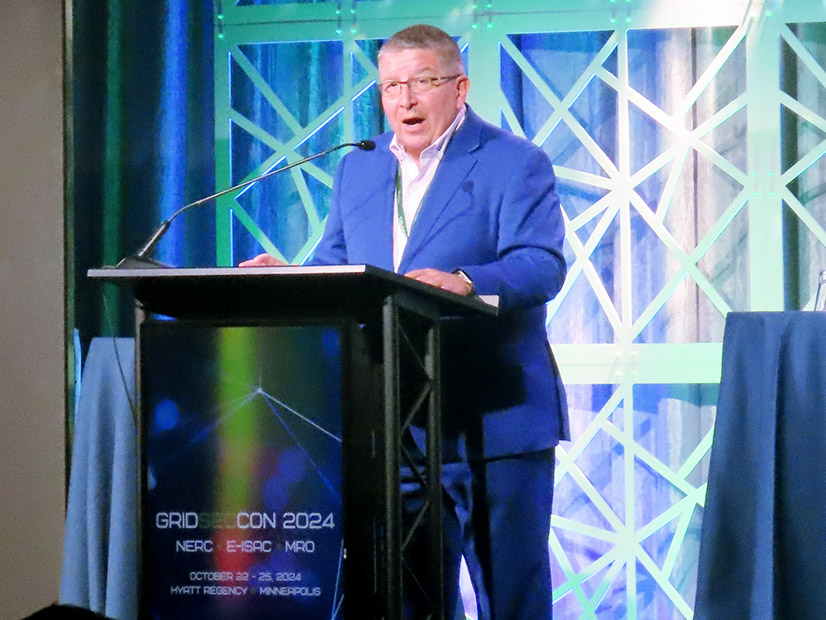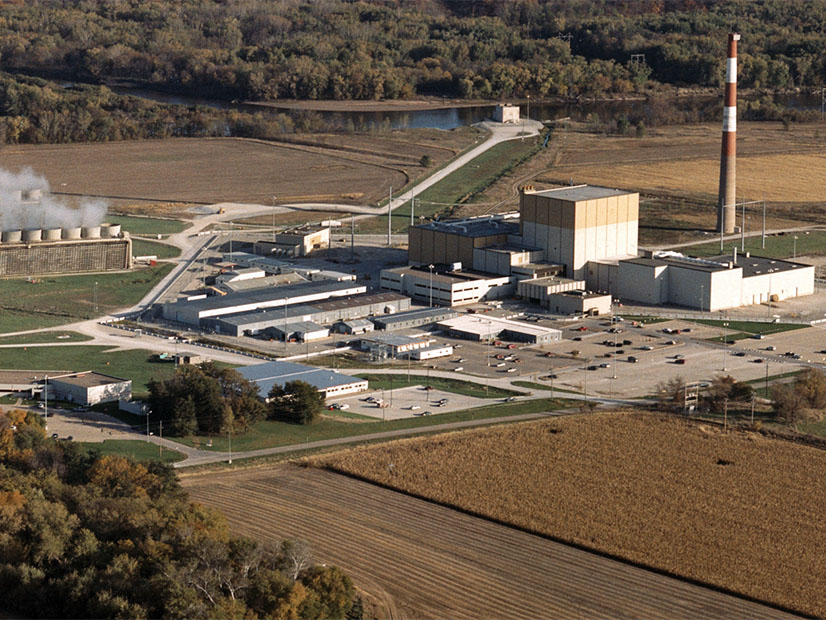A $250 million federal grant to the Clean Corridor Project that will install 167 medium- and heavy-duty truck charging ports on the New Jersey Turnpike is expected to help alleviate concerns about range.
Federal and state officials gathered at a press conference Oct. 23 at the Vince Lombardi Service Area on the New Jersey Turnpike just outside New York City. They hailed the grant as a major turning point in cutting heavy truck emissions, especially around overburdened communities through which the highway runs.
State officials said they hope installation of the chargers will quell concerns that the trucking sector, which has been slow to transition from diesel trucks to EVs, has about whether there are enough charging stations to make EV trucks a reliable alternative to diesel.
Trucks and buses account for only 4% of vehicles on the road but generate nearly 25% of transportation sector greenhouse gases (GHGs), said Shawn M. LaTourette, commissioner of the New Jersey Department of Environmental Protection (DEP). Making the charging infrastructure available along a key regional artery, he said, would “catalyze the deployment of zero-emission freight trucks in the Northeast and Mid-Atlantic region and beyond.”
“Demonstration is everything,” he said in an interview with NetZero Insider, adding that changing the “the type of car we drive, or the type of truck that we move goods with … can be a little scary to folks.”
The installation of the chargers, he said, can play an important role in “building that comfort” with EV trucks.
Aravind Kailas, advanced technology policy director for Volvo Group North America, said the federal government’s investment, while just part of what ultimately will be needed, is a good first step.
“This is a big event because it sends a signal across the state and across this corridor that there is a focus on the need for charging infrastructure and that the government is putting money where its mouth is,” he said.
Truck Purchase Incentivization
New Jersey is the leader of the Clean Corridor Coalition, which received the funds from the U.S. EPA Climate Pollution Reduction Grant (CPRG) program in July. The funding originated in the Inflation Reduction Act.
The funding will enable New Jersey, along with Connecticut, Delaware and Maryland, to not only install charging sites but also provide support services to establish a skilled workforce and mount a community engagement campaign to help inform the planning process.
The four states together will install 450 charging ports at 24 sites, with 148 chargers of 150 kW in power, 164 chargers of 350 kW and 130 chargers of 1,000 kW.
New Jersey’s funding will pay for 55 chargers of 150 kW, 61 chargers of 350 kW and 51 chargers of 1,000 kW.
The coalition expects to begin “engagement regarding site selection and project design” in January 2025, according to its website. The coalition then will issue a request for information in June to get stakeholder input on program design and each state will put out a request for proposals to build stations in their district. The project expects to award projects in April 2026.
Heavy Truck Emissions
The conference took place in front of the first — and only — electric truck owned by Hermann Services, a trucking company based in South Brunswick, N.J. Speakers at the press conference, along with LaTourette, included EPA Regional Administrator Lisa F. Garcia, and Congressmen Frank Pallone (D) and Robert Menendez (D).
Transportation generates 40% of the state’s GHGs, but electric trucks account for a minuscule portion of the 500,000 trucks registered in the state, according to the New Jersey Board of Public Utilities (BPU). Of the 184,700 heavy-duty trucks, Class 4 to 8, registered in New Jersey in August, 143 were EVs, including 32 that are Class 8 trucks, according to the DEP. There are 97 registered EV buses in the state and 4,496 Class 2b and 3 EVs, the smallest size of trucks.
Yet truckers in New Jersey, like those in other states, have been slow to adopt electric trucks, saying they are expensive, few models are available and the added weight of the battery reduces the amount of cargo the truck can carry. Range fear also is key, though a study of the Port of New York and New Jersey published in February 2023 found that electric trucks on the market at that time could handle 20% of the trips serving the port because the average route was only 140 miles. (See NREL Report Sees Role for Electric Trucks at Port of NY-NJ.)
“There’s this old age question of, what happens if I buy an electric vehicle, where am I going to charge it? How far will I be able to go?” said Garcia, of the charger initiative. “The hope is that, slowly, this incentivizes more purchases of those heavy-duty vehicles … [and] that truckers and other industries understand where they can charge, where the infrastructure will be.”
Grid Upgrades
Jeff Hermann, CEO of Hermann Services, said the company received the truck, a Freightliner eCascadia, in 2022 and since March has used it to deliver products for a single client, cosmetics manufacturers L’Oreal, around New Jersey. The 470-hp truck has a range of 250 miles.
Hermann said the truck has proved itself enough that next year he expects to buy 15 more, each of which will cost $500,000. Of that amount, the DEP will contribute $300,000 to help reduce the cost to closer to the $150,000 cost of a diesel truck, he said. The DEP also can award an additional $30,000 if the EV replaces a diesel truck currently in use, he said.
Hermann has installed one truck charger at its depot and expects to install four more to handle the 15 new trucks, costing about $750,000 for all the charging infrastructure, the CEO said.
With that setup, the highway chargers likely won’t benefit his company too much, because the truck mainly delivers locally, he said. But the planned chargers should help “the industry to be able to feel more comfortable — that they don’t have to invest in their own charging stations at their own facilities; they can use public facilities.”
Regulatory Change
The press conference took place a week after a press conference held by environmental groups and others to promote the passage of a bill in the New Jersey Legislature, S258. The bill would require the state to allocate $300 million for grid modernization and upgrades. The money would provide grants to electric public utilities, which would be used to offset electricity rate increases caused by the implementation of the modernization plan.
Speaking at the earlier press conference, Kailas, of Volvo, said the grid upgrade is essential to support charging infrastructure for heavy-duty vehicles, which have far greater electricity needs than regular EVs.
Kailas also attended the Oct. 23 press conference, where he said Volvo has nine electric Class 8 trucks operating in four or five fleets in New Jersey. Because they are significantly more expensive than diesel trucks, the trucking sector will need significant government subsidies to boost the number of EV trucks on the road, as well as regulatory help to ensure infrastructure projects can move ahead in a timely fashion.
“It’s one thing to throw money at the problem,” Kailas said. “But you really need the permitting laws, the utility to prioritize these types of projects and bring power. Otherwise, you put funding in, and the project takes many years, and then the trucks cannot be deployed because they don’t have chargers and they have to live off of off-grid solutions.”

